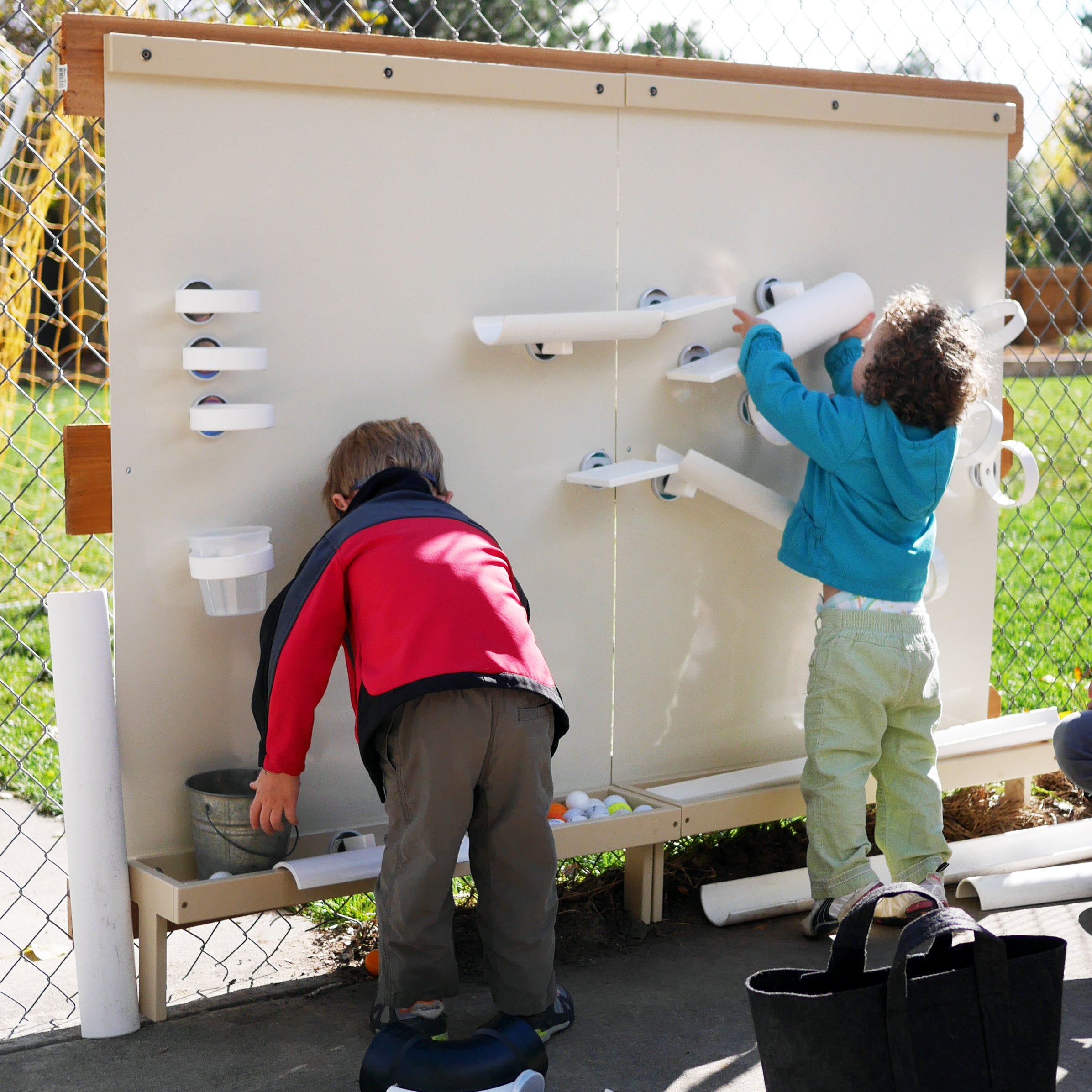The Role of Intensity In Play in Early Childhood Education
As early childhood educators who work within a Constructivist Perspective, we often struggle with when to intervene in play with our questions and when to stay silent, putting ourselves into the role of documenter and observer. What are the indicators that can inform us about this issue? As seen in the video, the children are immersed in deep exploration of the Magnet Wall and its many components. They appear to have had previous experience with these materials as we watch them moving the component parts to their liking. They work around each other and add and remove parts of the wall frequently. Many children are utilizing the wall components simultaneously and it appears that they are all experimenting with how the ball trajectory will result in the ball dropping into the wooden crate situated below, each in their own way. No conflict occurs in using the materials and space simultaneously, and they seem largely to be working relatively independently of each other. At one point the Teacher begins to insert questions: “What happened now?” And after a few moments… “What is happening?” Receiving no response from the child or either of his peers, the teacher wisely understands that the child, judging by his lack of response and lack of eye contact with the teacher, is not taking in the questioning. So what is happening here? How is the teacher’s role impacting the play? In order for children to effectively construct and co-construct their own knowledge there are a number of components that support the young child:- Quality, enriching materials that allow independent exploration and revisiting of theories over time.
- Ample time for exploration at the child’s pace.
- A collaborative spirit in the classroom that allows children to work together for common causes, often sharing and collaborating with materials.
- Intuitive, reflective teachers who support the work of young children.
 This blog was written by Andrea Knudsen, an official Kodo Collaborator! Early Childhood Instructor and Consultant inspired by the Educators of Reggio Emilia Italy. Nature-based education is also a passion, as is Design and Implementation of indoor and outdoor environments for young children. I currently consult and work with Fullerton College CDES Lab School as well as Community Seedlings Preschool in Southern California.
This blog was written by Andrea Knudsen, an official Kodo Collaborator! Early Childhood Instructor and Consultant inspired by the Educators of Reggio Emilia Italy. Nature-based education is also a passion, as is Design and Implementation of indoor and outdoor environments for young children. I currently consult and work with Fullerton College CDES Lab School as well as Community Seedlings Preschool in Southern California. Product featured in video is Kodo Magnet Wall

Share:
Week of the Young Child: Adjust Your Learning Environment
Our Partnership with the Center of Gravity ECE